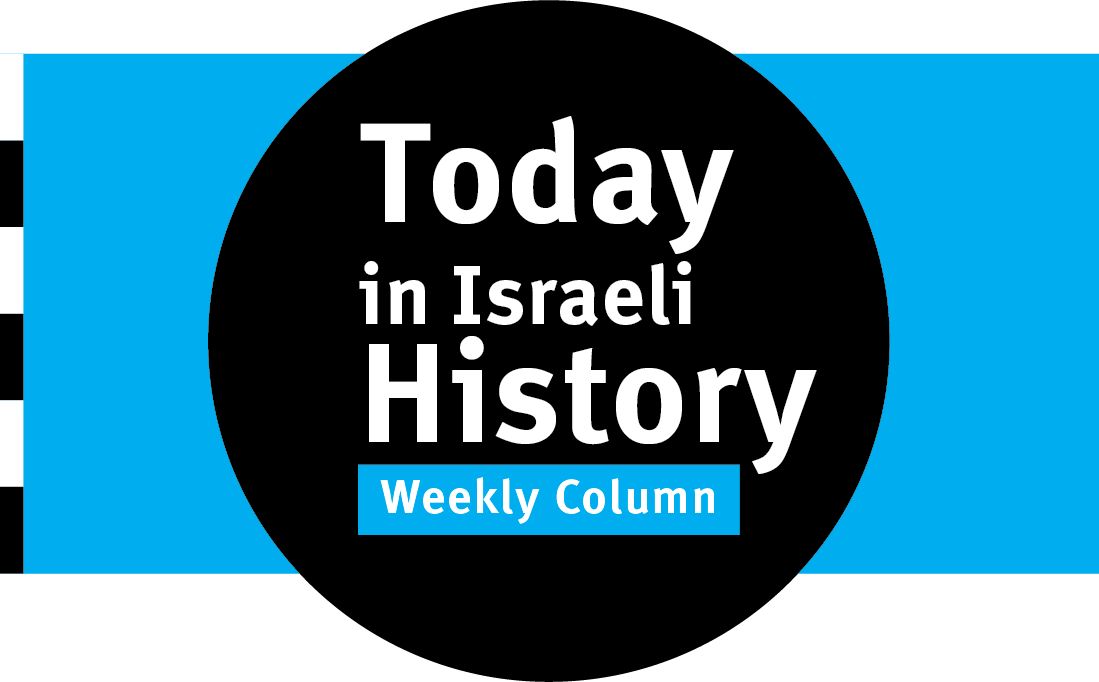April 26, 1881 — Pogrom Hits Kyiv

Anti-Jewish violence in the Russian Empire since the assassination of Czar Alexander II in March sweeps into Kyiv after a fight breaks out. Rioters loot and destroy Jewish shops and homes. The first post-assassination pogrom occurred April 15 in Elisavetgrad (now Kirovohrad), and Kyiv officials were warned to prepare for trouble. The police chief told Kyiv’s Jews to protect themselves, and they were warned a day earlier to stay inside.
April 27, 1984 — Israel Arrests Jewish Underground Members

Fifteen members of the Jewish Underground, an anti-Arab terrorist group, are arrested after a two-year Shin Bet investigation before they can sabotage five Arab buses in eastern Jerusalem. Twelve more members are arrested in the following days in connection with a series of plots and acts of violence, including attacks on two West Bank mayors, the murders of three college students and a plan to blow up the Dome of the Rock.
April 28, 2008 — Amos-3 is Launched Into Orbit

An Israel Aerospace Industries division launches the Amos-3 communications satellite, which reaches orbit 80 minutes after blasting off from Kazakhstan. Within a few months, the satellite establishes a position in geostationary orbit and replaces the Amos-1 in providing services to Europe, Africa, the Middle East and the U.S. East Coast. The satellites are based on IAI’s Affordable Modular Optimized Satellite (AMOS) platform.
April 29, 1979 — Prisoners of Zion Arrive in Israel

Five recently released Soviet Jewish prisoners arrive at Ben Gurion Airport, where they are welcomed by Prime Minister Menachem Begin. The five were convicted in 1970 of trying to hijack an airplane to escape the Soviet Union and catalyzed the movement to free Soviet Jewry. “Our hearts are filled with emotions,” Begin says. “Let us pray to the Lord that we shall soon have here all — all the prisoners of Zion, freed from Soviet jails and gathering in Israel.”
April 30, 2003 — U.S., Others Issue Map to Peace

The Quartet of the United States, Russia, the European Union and the United Nations issues its Roadmap for Peace, a framework for talks to achieve a two-state solution between Israel and the Palestinians. The plan comes amid the violence of the Second Intifada. Israel lists 14 main concerns with the Roadmap but, like the Palestinian Authority, commits to trying to make it work. Hamas rejects it. Talks under the plan make no progress.
May 1, 1956 — Eshkol Approves Building Ashdod

Finance Minister Levi Eshkol, a future prime minister, authorizes the establishment of the city of Ashdod on the site of a former Palestinian village, Isdud, along the coast between Tel Aviv and Ashkelon. Ashdod’s name comes from an ancient city less than five miles away that was one of the centers of Philistine power. The first official Israeli residents, Jewish immigrants from North Africa, arrive in November 1956.
May 2, 1921 — Rioters Kill Writer Brenner

Writer Yosef Haim Brenner, a pioneer of modern Hebrew literature and a founder of the Histadrut, is among six people killed on the second day of Arab-Jewish rioting in and around Jaffa. Born in Ukraine in 1881, Brenner became a Hebrew teacher and published his first book in 1900. Unlike another pioneer of modern Hebrew, Ahad Ha’am, Brenner advocated Jewish salvation through labor and the abandonment of tradition.
Items are provided by the Center for Israel Education (israeled.org), where you can find more details.




